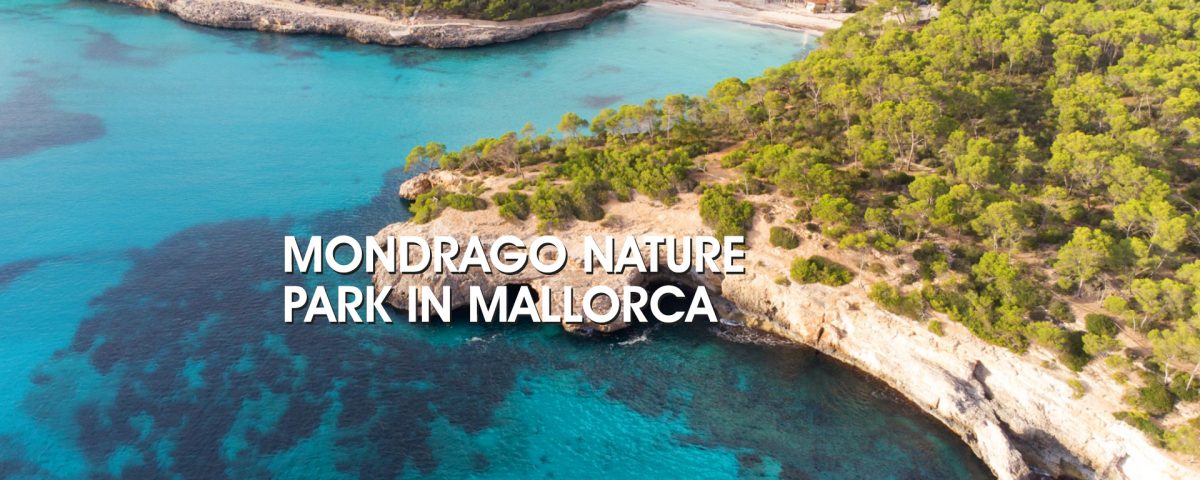Mondrago Natural Park in Mallorca: the original Eldorado for flora and fauna
The Mondrago Natural Park (Catalan: Parc Natural de Mondragó) is an extensive nature reserve in the southeast of the Balearic island of Mallorca. The rugged coastal landscape between the Bay of Palma and Colònia de Sant Jordi is one of the least developed regions of Mallorca. Authentic natural beauty hides behind the cliffs, small bays and long, fine sandy beaches. Here you will find some of the most beautiful beaches in Mallorca, which are either closely surrounded by rocks and thus form a bay, or are hidden behind rough pine and juniper scrub. This inaccessible part of the island, dedicated to agriculture and nature conservation, has been spared the most serious consequences of mass tourism. This is where you can get an idea of what the entire coast of the island must have looked like in its pristine state in the past.
General information about the nature reserve
Mondrago was declared a Natural Park in 1992. It has an area of about 750 hectares, of which only 95 hectares are public property, while the rest is privately owned. With its cliffs, pines, bushes and typical plants, the Mondrago Natural Park is one of the most visited parks in Mallorca. A large part of the coast is surrounded by high, impenetrable cliffs, washed by the waves of the Mediterranean Sea. Many coastal areas are difficult to access, but their untamed, rugged beauty is fascinating.
Apart from its ecological value, the Mondrago Natural Park is also of great ethnological interest. The area was long dedicated to the typical Mallorcan rainfed agriculture. The Barraques de roter still bear witness to this today. These are buildings constructed using a dry-stone technique, which were used as living quarters, warehouses and shelters for livestock. Other ethnological elements found here are water wheels and irrigation ditches.
Species in the Mondrago Natural Park
The Mondrago Natural Park is an important refuge for birds, as evidenced by its status as a special bird sanctuary. The nature park is home to more than 70 species of birds. It plays an important role as a resting place for many migratory bird species. Numerous indigenous bird species can be found here throughout the year. Many rare species of reptiles, amphibians, insects and mammals find their perfect habitat in the Mondrago Natural Park.
Plant species in the Mondrago Natural Park
Thanks to the semi-dry climate, the park is a mosaic of different habitats, each with its own vegetation. The vegetation continually changes from torrents to beaches, cliffs and rocks on the coast, to cultivated areas. The predominant vegetation in the nature reserve is characterised by a wide variety of shrubs, including rosemary, lavender, cistus or heather. Sea fennel and beach lilies thrive in bays and beaches. Among the trees we find wild olive trees, pines and junipers. One plant group worth mentioning is the family of wild orchids. Depending on the season, you can find different orchid species.
Hiking and cycling in the Mondrago Natural Park
Several excellent hiking and cycling trails cross the Mondrago Natural Park. You can reach it via the road from Santanyí to s'Alqueria Blanca and via the road between Santanyí and Cala Figuera. Both roads lead to parking lots at the entrances of the park. The Information Centre, which offers guided tours of the park, is located near the northern car park of ses Fonts de n'Alís. The path to the beach and the cycle routes are well marked. A hiking trip here is also highly recommended for families with children. After hiking you can refresh yourself at one of the beaches.
In addition to the public access paths, there are smaller paths leading to the protected area and the beach. There are also few hotels, fincas and private houses within the nature reserve, as well as bars and a restaurant. Because these were built before the park was established, they are tolerated under certain conditions. New authorisations have not been granted since 1992. Walks and bike rides through the park offer fantastic views over the coast, the bay and the sea.
Beautiful beaches in Mallorca: Cala Mondragó
Many place names in Mallorca contain the Spanish word "Cala", which translates to inlet or cove. The coast of Mallorca is characterised by many of these calas and they make up a large part of the island’s charm. In the Mondrago Natural Park there is a particularly beautiful cala bearing the same name, the Cala Mondragó. It has a width of about 200 metres and is about the same length. There are two beautiful beaches with fine sand and crystal clear water, which are ideal for swimming. The southern beach is called ses Fonts de n’Alís, and the northern beach is called Cala s'Amarador.
Discover the Beauty of Mondrago Nature Park in Mallorca
Known as the original Eldorado for flora and fauna, Mondrago Nature Park in Mallorca is an extensive nature reserve located in the southeast of the Balearic island of Mallorca. This rugged coastal landscape, nestled between the Bay of Palma and Colnia de Sant Jordi, is one of the least developed regions of Mallorca, offering authentic natural beauty behind its cliffs, small bays, and long, fine sandy beaches.
Mondrago Nature Park in Mallorca: A Nature Lover’s Paradise
Declared a Natural Park in 1992, Mondrago boasts an area of about 750 hectares, of which only 95 hectares are public property. The rest is privately owned, but still adheres to the principles of nature conservation. The park’s cliffs, pines, bushes, and typical plants make it one of the most visited parks in Mallorca. Its coastal areas, surrounded by high, impenetrable cliffs washed by the waves of the Mediterranean Sea, are difficult to access but their untamed rugged beauty is truly captivating.
Ecological and Ethnological Value of Mondrago Nature Park in Mallorca
Apart from its ecological importance, Mondrago Natural Park is also of great ethnological interest. The area has long been dedicated to the typical Mallorcan rainfed agriculture. The Barraques de roter, buildings constructed using a dry-stone technique, still stand today as a testament to the area’s agricultural past. These buildings were used as living quarters, warehouses, and shelters for livestock. Other ethnological elements found in the park include water wheels and irrigation ditches.
Flora and Fauna in the Mondrago Nature Park
The Mondrago Natural Park is home to more than 70 species of birds, making it an important refuge for these creatures. The park also serves as a resting place for many migratory bird species. Numerous indigenous bird species can be found here throughout the year, along with many rare species of reptiles, amphibians, insects, and mammals.
The park’s plant species are equally diverse, thanks to its semi-dry climate. The vegetation continually changes from torrents to beaches, cliffs, and rocks on the coast to cultivated areas. The predominant vegetation in the nature reserve is characterised by a wide variety of shrubs, including rosemary, lavender, cistus, and heather. Among the trees, you’ll find wild olive trees, pines, and junipers. One plant group worth mentioning is the family of wild orchids, which can be found in different species depending on the season.
Exploring the Mondrago Nature Park
The Mondrago Natural Park offers several excellent hiking and cycling trails. You can reach it via the road from Santany to s’Alqueria Blanca and via the road between Santany and Cala Figuera. Both roads lead to parking lots at the entrances of the park. After exploring the park, you can refresh yourself at one of the beautiful beaches, including the Cala Mondrag, which has two beautiful beaches with fine sand and crystal clear water which are ideal for swimming.


